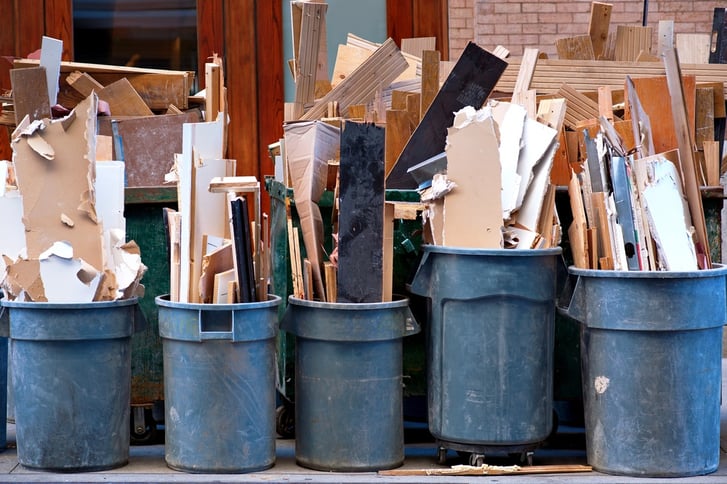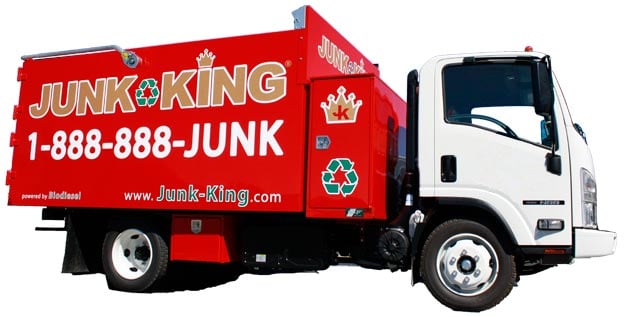
Because of the durability and potential for reuse of concrete debris, it is a great candidate for recycling. Most construction projects create large amounts of debris, and much of the waste material in that debris can be recycling, repurposed or reused in some form or another.
Being Green With Your Construction Debris
Many contractors might be surprised to know just how much actual debris and waste is produced on their job sites. Exactly how much waste is typically produced from construction projects? Here is a breakdown of the average types of construction and demolition (C&D) debris:
- 6 % Residential construction
- 3% Non-residential construction
- 11% Residential demolition
- 39% Non-residential demolition
- 22% Residential renovation
- 19% Non-residential renovation
Not surprisingly, approximately 40 percent of the C&D waste generated in the U.S. comes from non-residential, or commercial, demolition.
What might be surprising, however, is that at least 22 percent of C&D debris comes from the smaller residential renovation projects. This is great news for the waste stream in light of the fact that a great deal of this construction waste and debris can be recycled.
What Can Be Recycled In Construction Debris
Much of the material removed from a construction project can actually be reused somewhere else. In fact, in a typical residential remodel, for example, almost 75% of the debris can be recycled. This means that a large portion of the construction waste disposal does not require a trip to the dump.
And there is a viable and growing market for much of the waste and debris that is generated from typical job sites.
Here is a breakdown of the types of material that make up C&D waste from a typical renovation or remodel, 75 percent of which can be recycled instead of going to a local landfill:
- 3% Metals
- 5% Masonry
- 8% Drywall
- 9% Architectural elements
- 20% Cardboard
- 30% Wood
Only about 25 percent of these materials are substances that cannot be effectively reused or recycled. If construction firms could eliminate up to 75 percent of the solid waste out from the landfills. This would represent almost 125 million tons of waste material in the U.S. alone, given that construction accounts for almost 170 million tons of debris each year, according to the EPA.
Being Strategic By Recycling Construction Debris
Effective construction debris recycling requires strategic planning in advance of a project. The immediate and long term benefits, however, are well worth it. Consider that much of what is hauled away from a construction site can be reused. In fact, when deconstruction on a site is involved, there is often a wealth of recyclable material that can be effectively recovered.
There are three main reasons why contractors should consider construction waste recycling:
-
Reduced costs of removing and hauling
-
Elimination of high landfill fees
-
Contributes to the production of lower-cost recycled aggregate products
In addition to these economic benefits, there is always the possibility of "cashing in" on some of the materials that have a ready market.
No one likes to move concrete debris, for example, so hiring a professional junk hauling firm for concrete disposal is a plus. There are a variety of other benefits in recycling materials and waste concrete is a great example. The benefits of recycling concrete include:
- Keeping concrete debris out of landfills saves landfill space
- Using recycled material as gravel reduces the need for gravel mining
- Using recycled concrete as the base material for roadways reduces the pollution involved in trucking material
Construction debris, however, can be anything from concrete, masonry and flooring tiles to fixtures and doors. Any other materials like wood, metal, bricks and glass are included. In fact, even the trees, stumps and earth collected from clearing a site falls into this category of waste.
Remember, most of the common C&D materials including concrete, porcelain, rigid plastics, tile, lumber, metals, masonry, plastic, rock, carpet, insulation and more are recyclable. What can actually be recycled at your local recycling facility, however, may vary depending on location.
Think of "Deconstruction" Instead of Demolition
Deconstruction refers to carefully dismantling pieces of a home or building in order to salvage valuable building materials. Commonly items that are deconstructed include doors, windows, flooring, ceiling tile, counter tops, cabinets, light and plumbing fixtures, molding, joint fixtures, roofing, blinds and shades.
There are many environmental benefits to deconstruction considering that building debris accounts for about one-third of the solid waste in the United States. In fact, it’s estimated that one year’s amount of building debris is enough to build a wall about 30 feet high and 30 feet thick around the entire coast of the continental United States.
Keeping the bulk of this reusable building material out of landfills makes a significant environmental impact.
Because these deconstructed materials are recycled and reused, is decreases the need for raw materials in new building projects. In addition to being great for the environment, deconstruction can also mean cash in your pocket since many of the materials you donate can translate into a tax write-off.
However, getting it off-site and hauled away is still a potentially costly and time-consuming proposition if you choose to do it yourself.
Expert Help for Your Construction Debris Recycling
Part of the beauty of outsourcing the pick up and disposing of your construction waste is the convenience. But, just as important, is the very real impact that having your debris recycled and reused. California is one of the leading states in the processing and reuse of concrete and other waste building materials, and Sonoma County contractors are a big part of that movement.
Junk King provides an efficient, safe and eco-friendly construction waste disposal service so you don’t need to worry about the pick up or disposal of the debris after your project is complete. Whether you need our services several times during a construction project or just once after it is complete, our hauling professionals will ensure that the construction debris is out of your way so that you can get on with the job.
Our team specializes in construction debris removal. We can be at your facility in mere minutes, so call us today! Our crew is fully insured and well-trained, so you can trust them to get rid of your unwanted items in a professional and courteous fashion.
One of the best things about hiring Junk King is that we do recycle much of the material we pick-up. This is proof of our commitment to being an eco-friendly removal service. If you have questions about what we do or what we believe, give us a call at (707) 744-4254.



